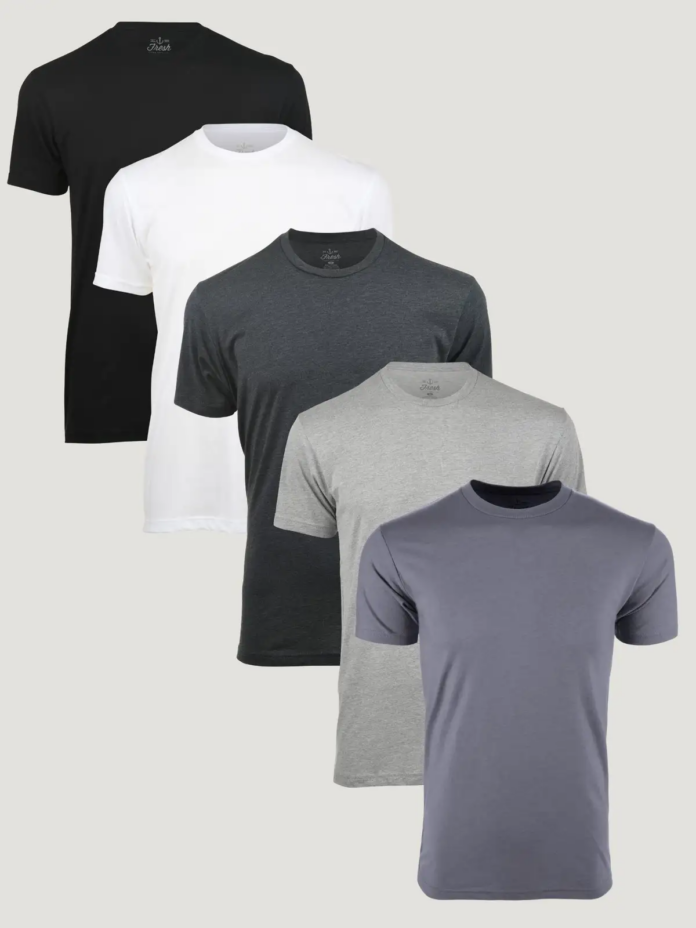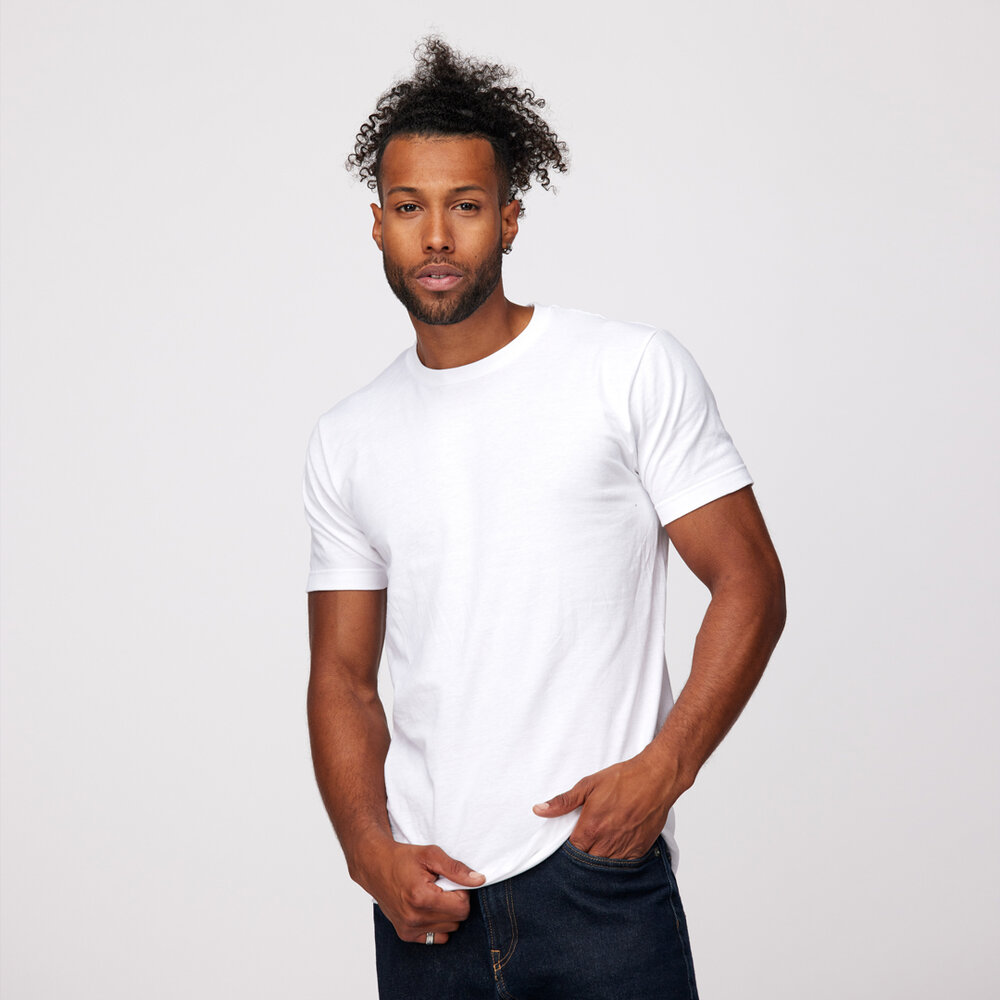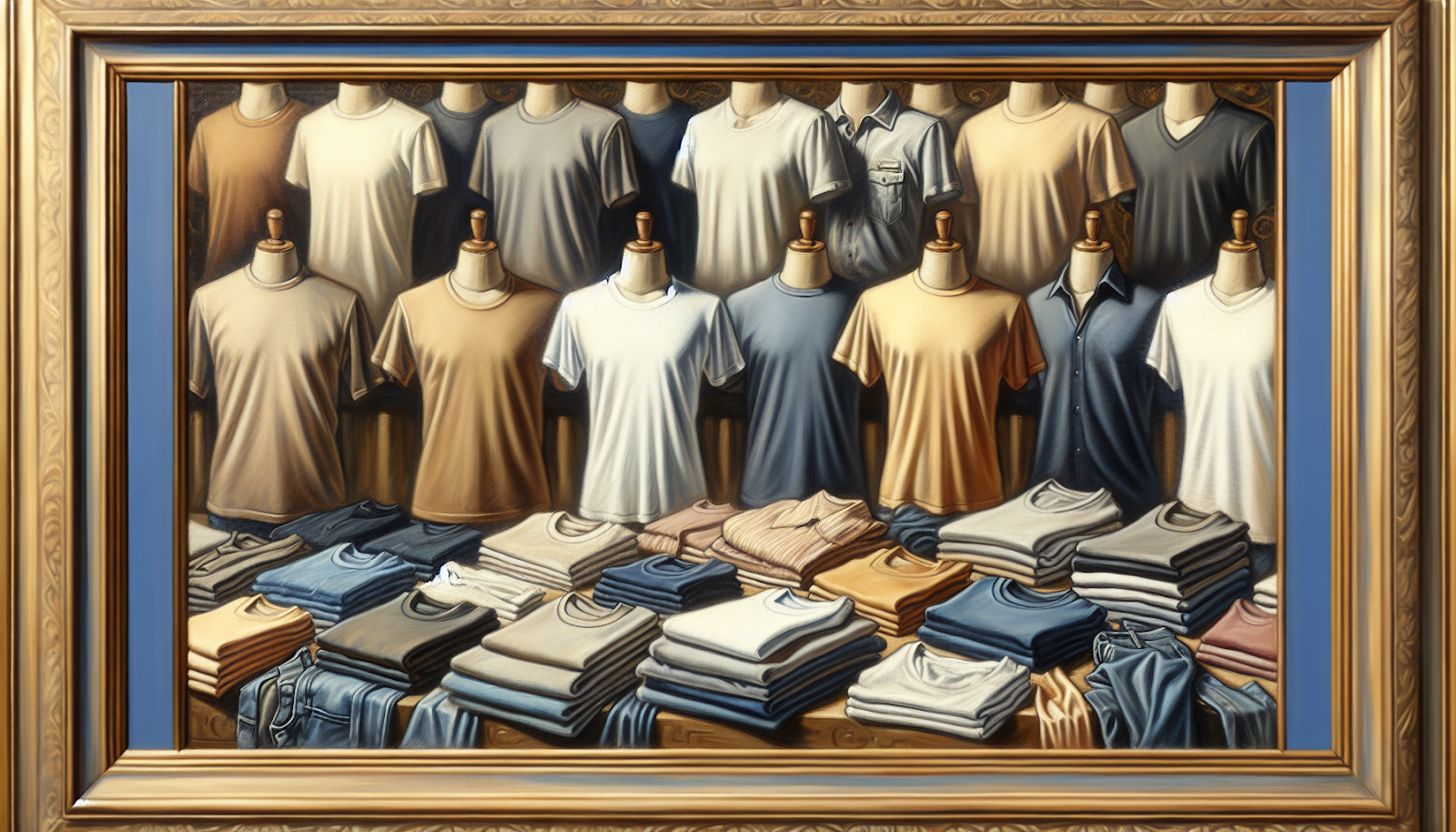
T-shirts are a staple in everyone’s wardrobe. They’re versatile, comfortable, and can be styled in countless ways. Whether you’re buying bulk t-shirts for a company event or just looking to refresh your collection, understanding the basics of t-shirts is essential.
This article will guide you through everything you need to know about t-shirts, from the different types and fabrics to the process of buying bulk apparel.
Different Types of T-Shirts
T-shirts come in a variety of styles, each with its unique characteristics. Here are some of the most common types:
- Basic Half-Sleeve T-Shirt: This is the most simple and popular style, favoured by both men and women. It features a close-to-the-neck crew neckline.
- V-Neck T-Shirt: This style has a V-shaped neckline, offering a bit more body exposure than the basic t-shirt.
- Polo T-Shirt: Polo t-shirts feature a collar and a placket with two or three buttons, offering a semi-formal look.
- Long-Sleeve T-Shirt: Similar to the basic t-shirt but with longer arms, perfect for cooler weather.
- Ringer T-Shirt: This style has contrasting ribbing on the collar and sleeve bands, adding a pop of colour.
- Scoop-Neck T-Shirt: This style features a wider, rounder neckline that sits lower on the chest.
Remember, the key to wearing a t-shirt fashionably is choosing the right style for the right occasion.

Choosing the Right Fabric
The fabric of a t-shirt affects its comfort, durability, and how it drapes on the body. The most popular t-shirt fabric materials are cotton, polyester, and cotton/polyester blends.
Cotton t-shirts are soft, breathable, and comfortable, making them ideal for hot weather or people with sensitive skin. They’re also environmentally friendly and cost-effective.
Polyester t-shirts are durable, quick-drying, and wrinkle-resistant, making them perfect for athletic wear. However, they’re not as breathable as cotton and may not be as comfortable in hot weather.
Cotton/Polyester Blends combine the best of both worlds. They’re comfortable like cotton and durable like polyester. They also tend to be wrinkle-resistant and dry faster than 100% cotton t-shirts.
When choosing a fabric, consider your needs and preferences. If comfort is your priority, go for cotton. If you need a t-shirt for physical activities, polyester or a blend might be a better choice.
Buying T-Shirts in Bulk
Buying t-shirts in bulk can be cost-effective, especially if you’re purchasing for a large group or business purposes. Here are some tips for buying bulk apparel:
- Choose a Reputable Supplier: Research and select a supplier that meets your business requirements. Look for a supplier that offers a range of designs and qualities.
- Consider Your Audience: Think about who will be wearing the t-shirts. Consider their preferences in terms of style, fit, and fabric.
- Order the Right Sizes: Use a basic ratio to determine the number of each size to order and adjust based on your group’s specific needs.
- Look for Discounts: Many suppliers offer discounts for bulk purchases. Be sure to take advantage of these deals to save money.

T-Shirt Printing Techniques
In addition to the style and fabric of a t-shirt, another important aspect to consider is the printing technique used. This is especially relevant if you’re buying bulk t-shirts for promotional purposes or a special event. Here are some common t-shirt printing techniques:
- Screen Printing: This is the most common method for t-shirt printing, especially for large orders. It involves creating a stencil (or “screen”) and then using that stencil to apply layers of ink on the printing surface. Each colour is applied using a different stencil, one at a time, combined to achieve the final look.
- Direct-to-Garment (DTG) Printing: This method works like a digital printer for your clothes. The desired design is printed directly onto the garment, allowing for great detail and colour accuracy. However, it’s not the best choice for bulk orders due to its slower speed.
- Heat Transfer: This method involves printing a design onto a special type of paper and then transferring that design onto the t-shirt using heat. It’s great for small orders or designs with a lot of colours, but it’s not as durable as other methods.
- Dye Sublimation: This method is best for polyester t-shirts with light colours. It can print all-over designs on the entire t-shirt, but it’s not suitable for cotton t-shirts or dark-coloured garments.
When choosing a printing method, consider the complexity of your design, the number of colours, the type of fabric, and the number of t-shirts you need.
Conclusion
T-shirts are more than just a basic piece of clothing. They’re a canvas for self-expression, a tool for branding, and a staple in every wardrobe. Whether you’re a fashion enthusiast, a business owner looking to buy bulk t-shirts, or just someone who appreciates the comfort of a good t-shirt, understanding the basics of t-shirts can enhance your shopping experience and ensure you make the right choices. Happy shopping!






